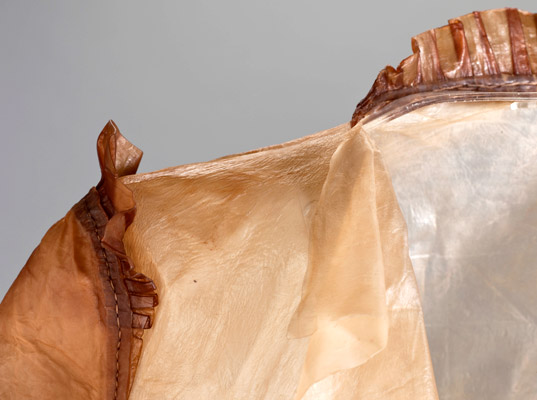This jacket is made from a thin, dried sheet of bacterial cellulose grown out of yeast and tea leaves. It’s the creation of designer Suzanne Lee, who is a senior research fellow at the School of Fashion & Textiles at Central Saint Martins in London, is the brains (and brawn) behind BioCouture, an experiment in growing garments from the same microbes that ferment the tasty caffeinated beverage.
According to Ecouterre, the garment required “at least a couple of bathtubs, some yeast, a pinch of bacteria, and several cups of sweetened green tea.” Then:
From this microbial soup, fibers begin to sprout and propagate, eventually resulting in thin, wet sheets of bacterial cellulose that can be molded to a dress form. As the sheets dry out, overlapping edges “felt” together to become fused seams. When all moisture has evaporated, the fibers develop a tight-knit, papyrus-like surface that can be bleached or stained with fruit and vegetable dyes such as turmeric, indigo, and beetroot.
Lee has also designed other “biofilm wearables,” and this one is on display at London’s Science Museum.





